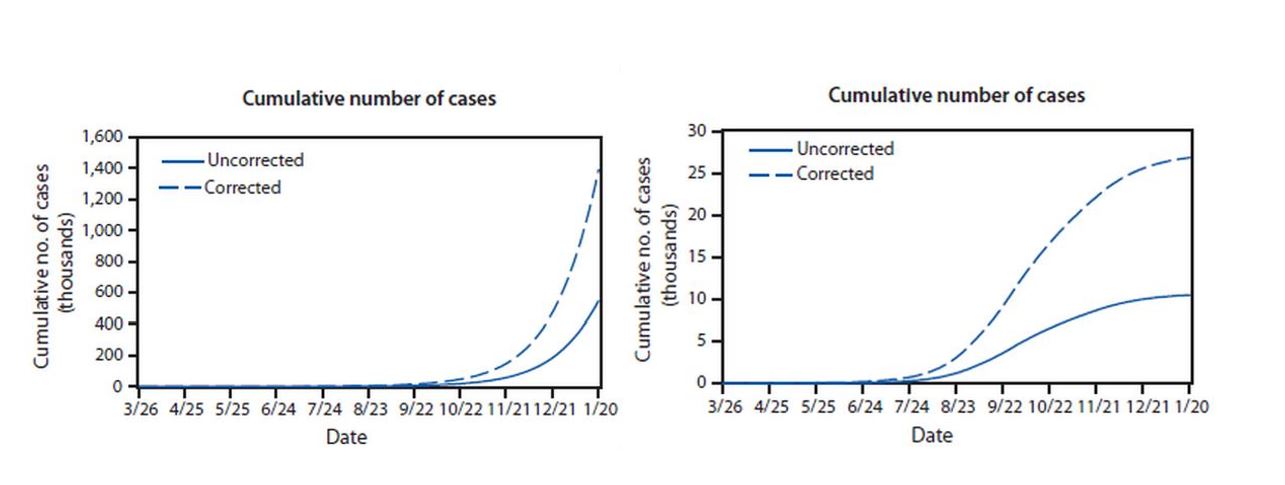Back in late September, just a week before Ebola panic hit a peak in the US when a patient in Dallas was diagnosed with the disease, the CDC produced a remarkable study in which they modeled the expected number of Ebola cases both with and without intervention. That study received a huge amount of press coverage, primarily because the model predicted that without intervention by public health authorities, as many as 1.4 million people could be infected. By contrast, with a program of isolating infected patients and educating survivors on proper burial techniques, the model showed that the outbreak would be much less widespread. The modeling projected cases through yesterday’s date, January 20.
Less reported in the media at the time was the projected number of cases under the scenario of intervention. The model predicted an actual number of cases between 25,000 and 30,000 by this week and a reported number of cases of nearly 10,000. Here are the two projections placed alongside one another:

CDC modeling of projected number of Ebola cases without (left) and with (right) improved patient isolation and safe burial practices.
The latest data from WHO indicate just over 21,000 cases as of January 11. That is a remarkable achievement by the team that developed the model. The observed actual number of reported cases fell squarely within the range predicted by the model. With the influx of health professionals to the region to provide care for infected patients, it seems likely to me that the correction factor applied in the CDC model to correct from the reported number of cases to the actual number would be very different now, so that the reported number and actual number would be much closer to one another, making the prediction even more accurate.
Last time I posted on progress in stopping the spread of the virus, we saw that the rate of appearance of new cases was dropping rapidly in Liberia but was still accelerating in Sierra Leone. The good news is that the improved practices have finally been implemented sufficiently in Sierra Leone that the rate is now dropping there. Here are the plots of weekly new cases in the two countries from the latest WHO Situation Report:

Weekly number of new cases of Ebola in Liberia (left) and Sierra Leone (right). Control of the virus was achieved about two months later in Sierra Leone than in Liberia.
Although the battle is not yet over, all indications are that the outbreak is well past the worst phase and should end soon. Considering how closely the CDC model predicted the eventual size of the outbreak with the control measures that were implemented, it seems safe to say that the world would have witnessed a truly horrific level of spread of the virus had improved safety measures not been implemented. As of the January 14 WHO Situation Report, a total of 825 health care workers have been infected, with 493 of them dying. Without their sacrifices, many more would have been lost.